Hot Outdoor Recreation Posts


How To: Make a cheap but realistic goose call
In this video tutorial, viewers learn how to make a realistic goose call. The materials required for this project are: a plastic bottle cap, scissors, rubber band and a piece of paper. Begin by making a small hole in the bottle cap. Then wrap the paper around the other side of the bottle cap and secure it with the rubber band. Now just blow in the hole and make a humming sound to create a goose call. This video will benefit those viewers who enjoy goose hunting, and would like to learn how to...

News: Deadly Shark Submarine Sure to Freak Out Beach Goers
Another sweet boat this weekend (see yesterday's Zipper Motorboat), the Seabreacher X is a high-speed sub, fashioned after a man-eating shark. Built by Innespace, the submarine has a 260 horsepower engine, can speed through the water at 50 mph on the surface and 25 mph when diving, and best of all: the Seabreacher X can jump 12 feet into the air!

How To: Lash a bamboo tripod
In this tutorial, we learn how to lash a bamboo tripod. First, you will tie a clove hitch by taking one piece of bamboo and wrapping the rope around it, then crossing the two sides of the string together to make a hitch. Next, you will secure the clove hitch around the third piece of bamboo. Now, you will rap all the pieces of bamboo together with the rope. Continue to do this until all the pieces feel secure together. Wrap the rope several times around each of the pieces, then wrap it in the...

How To: Work a spinner bait
In this tutorial, we learn how to work a spinner bait. This has a head as the weight, then the hook underneath the head and skirt. On the other side of the safety pin, there is who flat blades for murky waters. These help with sun reflection. This is a very versatile type of bait that helps you fish in murky waters. Bass will attack it as soon as they see it, helping you catch more fish. There is a lot of equipment on this, so it takes the bass a little while to get a hold of it. To ensure yo...

How To: Tie the basic knot design of a cargo net
In this video, we learn how to tie the basic knot design of a cargo net. First, tie a double overhand knot on a rope bent into two. After this, make cow hitching on the first loop that you created. Next, make a second double overhand knot followed by cow hitching the second loop. After you do this, you will be able to size up for use! To make this, you must have some prior knowledge of how to tie different knots. If you don't, you won't know how to make the shapes. Use a picture as a referenc...

How To: Tie a double surgeon's knot w/ a knot tying animation
Learn how to tie the Double Surgeon's Knot for fishing. This animated knot tying tutorial is the best you'll find. With this knot tying how to, you can tie the Double Surgeon's Knot fast or slow, or pause it at every step along the way. Learn to tie knots for your next fishing trip. Tie a double surgeon's knot w/ a knot tying animation.

How To: Fish a swimbait lure to catch quality bass
If you're targeting big bass during the summertime, the best bait to use is a swimbait lure. You may know that they don't give you tons of bites, but in this case, quality is the key. The best bass you'll eve catch will come off this swimbait lure. This is why swimbaits are favorites with anglers who have the confidence to continue casting them in search of lunkers. Wade Bourne of MyOutdoorTV shows you how to fish a swimbait lure.

How To: Tie off a suspension ring with a basic knot
This video tutorial is in the Outdoor Recreation category which will show you how to tie off a suspension ring with a basic knot. Weld less rings are used as connection points for a variety of purposes. However, riggers quite often make tying a ring unnecessarily complicated. All that is required is a basic knot and a few hitches. For this you will need to tie the running overhand knot. Take a rope, bend it in half and tie it to a suspension point. Now pass both ends of the rope through the r...

How To: Winterizing your boat engine block
In this Outdoor Recreation video tutorial you will learn how to winterizing your boat engine block. For this you will need some screwdrivers, compressed air and a flexible hose if you have a hot water heater system on the boat. First you got to drain out all the water inside the engine. Remove the two plugs from the block and one plug from the sea pot as shown in the video and drain out all the water. Be careful and don't drop the seals while removing the plugs from the engine. While the wate...

How To: Adjust cable tension, jockey wheel, derailleur hanger
THere are many parts of the rear derailleur on a mountain or road bike that need frequent adjustment to function properly and give you proper performance on your rides. This video will teach you how to adjust the cable tension, the jockey wheel, and the hanger of the derailleur, ensuring that the whole system is functioning smoothly and that your bike will work as well as possible.

How To: Make a cheap bike light mount out of PVC pipe
In this clip, learn how to make a fast, cheap and super easy mount for your your bicycle to display safety lights. Wearing bike lights at night will help you stay safe in the dark and if you want to avoid the cost of getting lights custom fitted, this hack is perfect for you. All you will need is some PVC pipe and some grip tape (like the kind used for tennis rackets). Follow along and get started. This mount is flexible and fits most standard lights or flashlights.

How To: Install or remove the FSA Mega Exo system
The FSA Mega Exo is a sophisticated integrated spindle external bearing crank. Like most elaborate bike products, it has several of its own quirks that make installing it different than installing any other similar product, like the Truvativ GXP. This video demonstrates the installation of the FSA Mega Exo system, listing all of the tools your will need and the step that you have to perform to integrate this high-performance part into your biking life.

How To: Install V-Brakes on a mountain bike the complex way
V-brakes are just one of the may types of brakes that you can install on your mountain bike to keep yourself from flying off the side of the mountain. This video features a step-by-step demonstration of how to install v-brakes on your mountain bike. Bike maintenance is a chore, but get it done and get back out on the mountain safer than your were before!
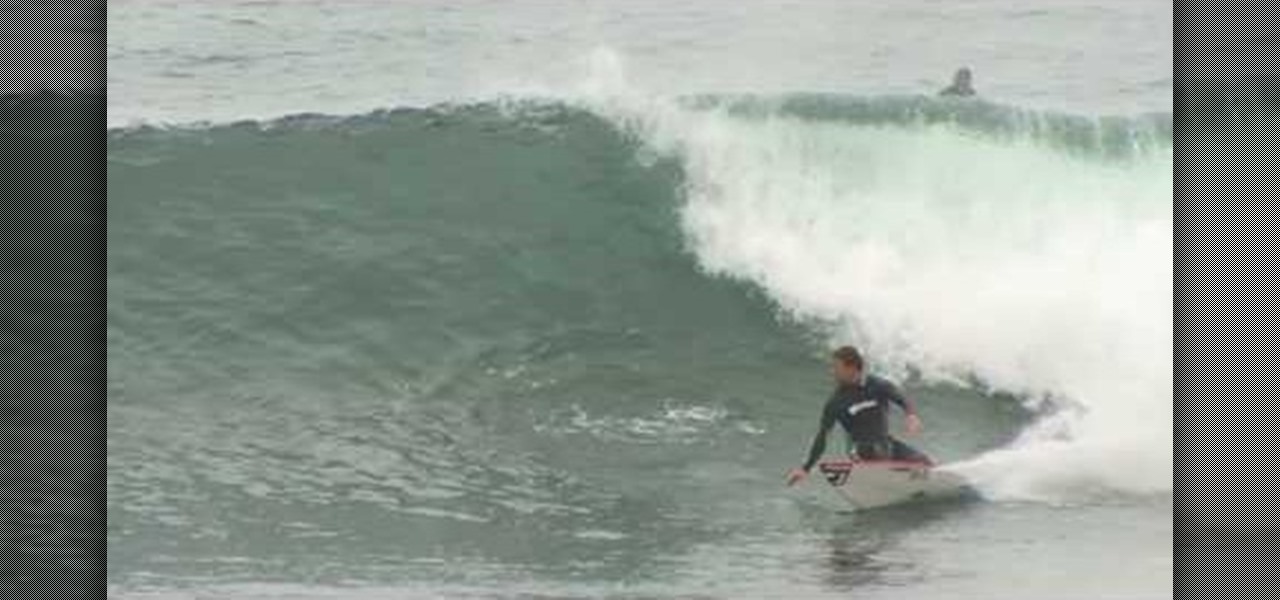
How To: Perform a backside snap on a surfboard
In this tutorial, Damien Hobgood shows you how to acheive a perfect backside snap on a surfboard. Damien will show you exactly how to hold your body to do this move and how to achieve the best balance. In this tutorial, Damien shows you examples and gives you great tips and advice.

How To: Tie a sliding Snell fisherman's knot
Know your knots! Learn to tie a sliding Snell fisherman's knot with this free video guide. When tying the sliding snell fishing knot, it's like tying the common snell, but you'll be adding an extra line. The knot is easy to tie provided, of course, you know how to go about making it. For an easy-to-follow, step-by-step overview of how to tie this useful fisherman's knot in a minute's time or less, watch this free video knot tyer's guide.

How To: Tie a halter hitch knot
Know your knots! With this free video tutorial, you'll learn how to tie a halter hitch knot. A halter hitch knot is great for tying stuff down or binding something, and any rope will work. The knot is easy to tie provided, of course, you know how to go about making it. For an easy-to-follow, step-by-step overview of how to tie this useful fisherman's knot in a minute's time or less, watch this free video knot tyer's guide.
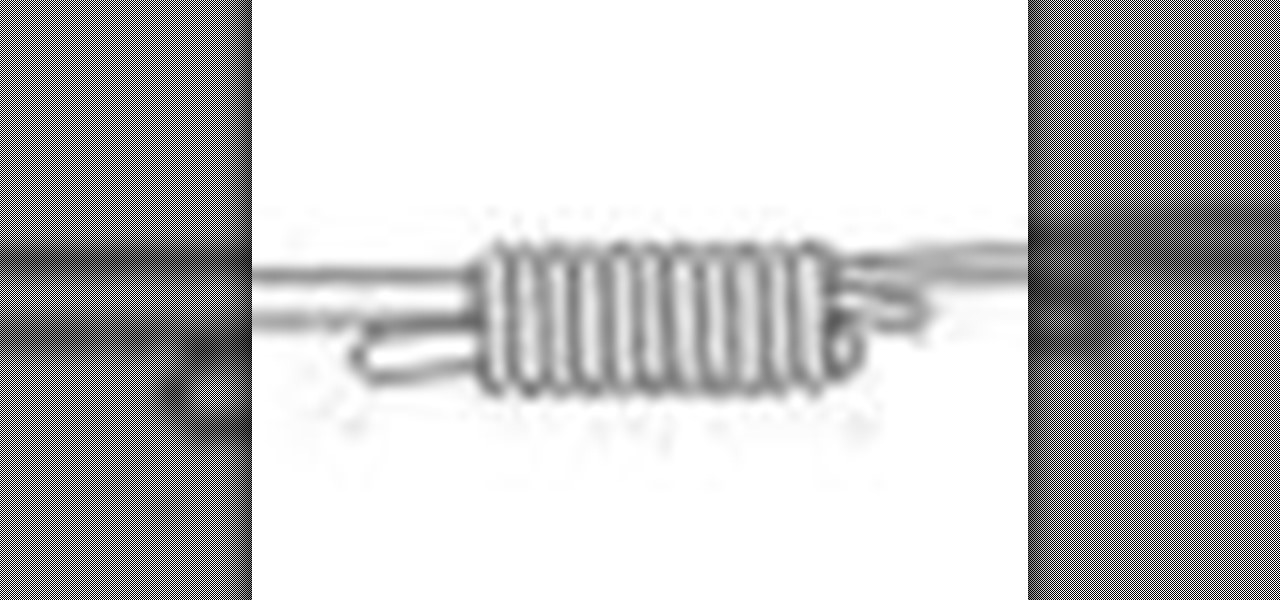
How To: Tie an Albright Special knot to join dissimilar lines
Next time you're out on the dock, try out this fishing knot. The Albright knot is known for it's adaptability to inequality. This is definitely a fishing line knot you should know! Watch this tying animation to learn how to tie it.

How To: String a roller-guided fishing pole
Learn from Captain Mark the Shark, an expert in charter fishing, how to string a roller-guided fishing pole. When stringing a roller-guided fishing pole, make sure that the line goes through the middle of both rollers. Discover why spinning rods have more guides than a roller with help from this professional fishing trainer.

How To: Attach the leader to braided fishing line
Want to go deep-sea fishing but lack the necessary know-how when it comes to the sport's specialized equipment? Never you fear, brave pescador(a): with this fisherman's how-to, you'll learn how to attach a leader to a braided fishing line for drop shotting.

How To: Ollie with ease for beginners
In this video tutorial, viewers learn how to perform an Ollie, kick flip and shuv-it skateboarding tricks. For the Ollie, begin with the back foot on the tip of the tail and the front foot on the middle of the board. Bend your knees slightly and extend your back as you raise up. Pop the tail of the board and roll the front foot on the nose of the board to land it. For the kick flip, start with an Ollie position and bend the knees. Pop the tail and roll your front foot to the nose. Flick with ...

How To: Bait a fishing hook
In this video tutorial, viewers learn how to put bait on a fishing hook. Be careful when working with the hooks. Begin by taking off the hook from the rod and put the bait on the hook. Depending on the bait, users will need to use the whole or half of the bait. With the head of the worm, put the hook into the side of the head. Now thread the worm through the point of the hook, until it cover the shank of the shank of the hook. This video will benefit those viewers who are interested in fishin...

How To: Make a bow and arrow with a pen and a rubber band
This video helps in making a bow and arrow using pencil, pen and rubber band. You can get these from school, stores, house etc.

How To: Properly tie and anchor your boat
This video is some real basic stuff about boat tying and anchoring. Watch to see the right way to tie and anchor your boat.

How To: Tie a Tautline Hitch knot
Learn how to tie a Tautline Hitch - a good gripping hitch that is quick to tie and resists sliding when the pull is parallel to the object to which it is tied. It is quite similar to the Rolling Hitch. This is a fine knot for camping, climbing, sailing or Boy Scout training.
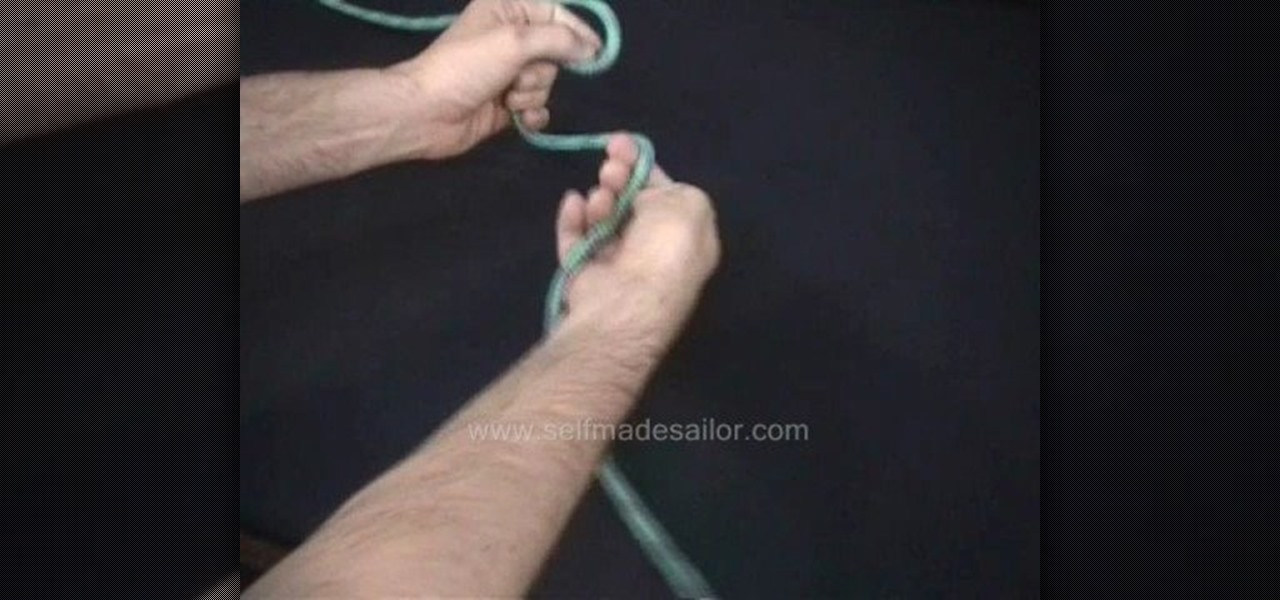
How To: Tie a Tom Fool's Knot
Learn how to tie a Tom Fool's knot - this knot is a basis for a number of decorative and functional knots. This knot can be used in sailing, boating, general use, camping and bondage.

How To: Tie a Turk's head knot for sailing
This how to video tutorial demonstrates how to tie a Turk's knot for sailing. Follow along with the step by step process and the directions below to learn how to tie the Turk's knot.

How To: Tie a variation of the bowline knot for sailing
This is a home grown variant of the bowline, also useful for sailing. The bowline is tied in the standard manner in the bight of the rope. The running end is passed below the knot and follows the turn back around through the locking bend. The exiting loop can be used for lifting or for tensioning the line to tie down deck cargo. Check out this video sailing tutorial and learn how to tie a variation of the bowline knot.

How To: Tie the perfection loop for fly fishing
Learn how to tie the Perfection Loop knot for fly fishing, with this helpful instructional video. 1. To start the perfection loop, hold the standing line in one hand, and with your other hand create a loop about one-and-a-half inches in diameter that crosses behind the standing line. Pinch the two lines with your thumb and index finger to hold them in place.

How To: Tie the quick release knot
Here is a good knot. Do you know it? It's the quick release knot. Check out this instructional knot tying video that demonstrates how to tie the Quick Release knot. Just follow the simple instructions outlined in this boating tutorial and learn how to tie a Quick Release knot. Knot tying is a breeze with this video. Start practicing and reel in the big fish!

How To: Tie the Jansik special fishing knot
Check out this instructional fishing video that demonstrates how to tie the Jansik Special knot. Just follow the simple instructions outlined in this fishing tutorial and learn how to tie a Jansik Special fishing knot. Knot tying is a breeze with this video. Start practicing and reel in the big fish!
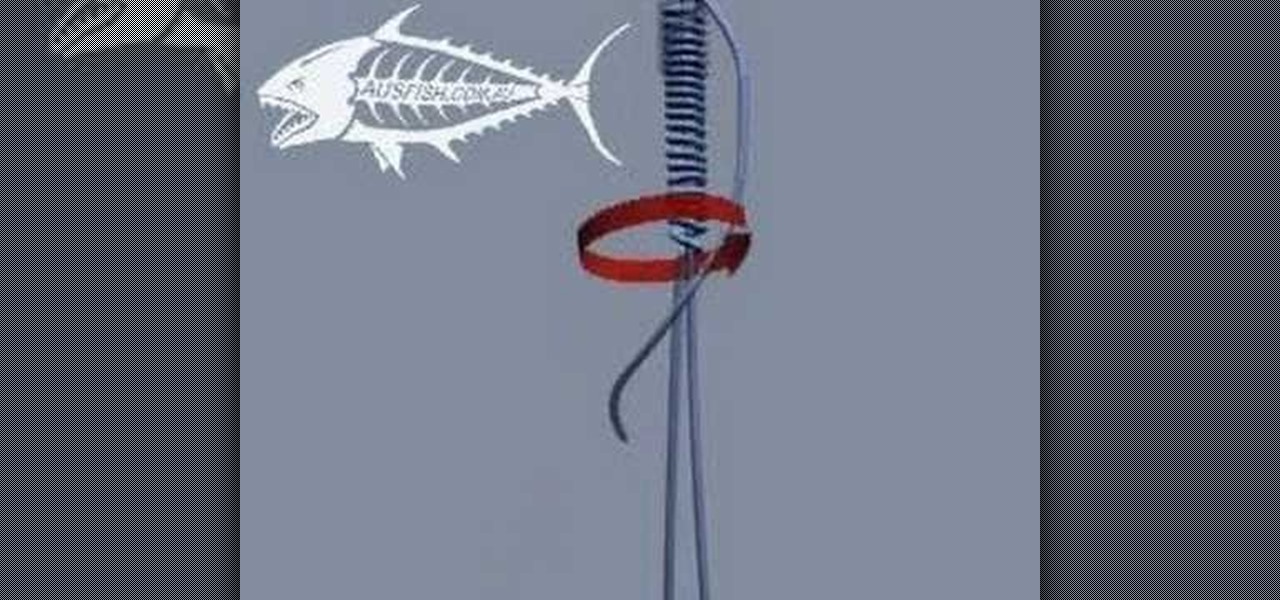
How To: Tie a bimini twist fishing knot
Check out this fishing tutorial video that demonstrates how to tie a Bimini Twist fishing knot. Just follow the simple steps as diagrammed in this animated fishing video and learn how to tie a Bimini Twist fishing knot. Tying knots is a breeze with this how to video. So start reeling in the big fish!
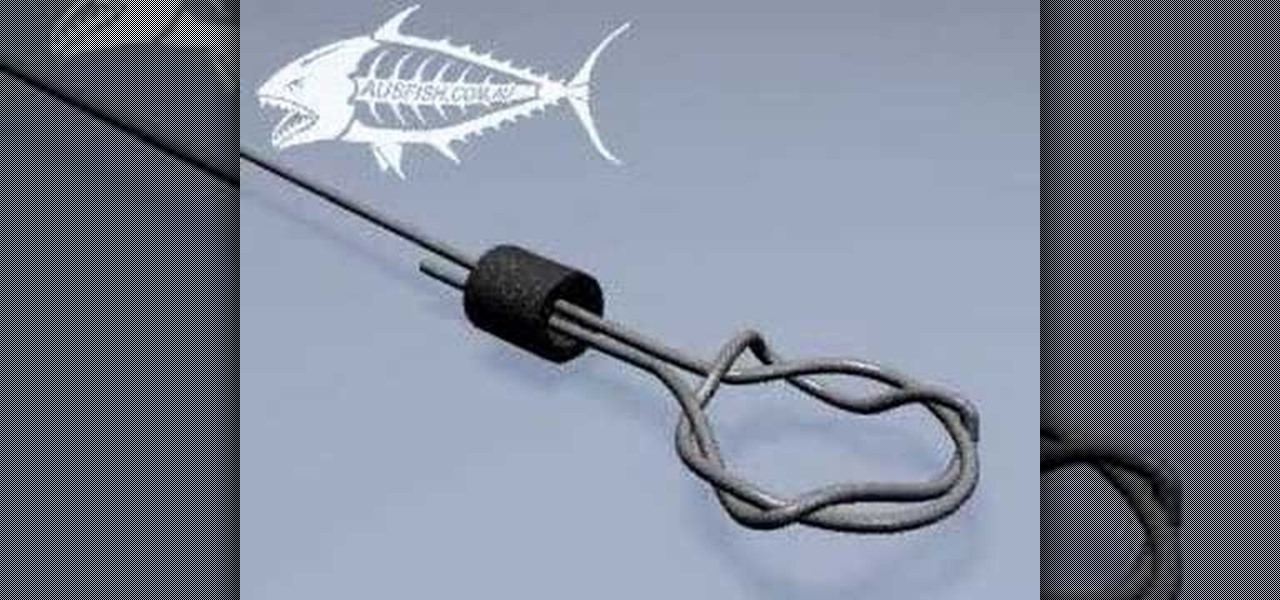
How To: Tie a Flemish Eye fishing knot for wire
Check out this fishing tutorial video that demonstrates how to tie a Flemish Eye fishing knot for tying wire ends for terminal tackle. Just follow the simple steps as outlined in this instructional fishing video and learn how to tie a Flemish Eye fishing knot. Start reeling in the big fish!

How To: Tie two ropes together with different knots
For those who didn't learn any knot-tying skills in scouts, or have forgotten them all now, this video demonstration shows how to do knots from basic to more advanced knots such as Sheet Bend, Fisherman's Knot, Square Knot and Thief's Knot. Knot tying is essential for camping, sailing, fishing, and even when you least suspect it. Watch this video camping and outdoor preparation tutorial and learn how to tie two ropes together with several different styles of knots.

How To: Connect monofilament fishing line to a braid
This how-to video provides step-by-step instruction from Curtis Owens of Performance Tackle for attaching monofilament fishing line to a braid. While some fisherman only stick to one kind of fishing line, some might like to mix things up. The only problem is in learning to tie different types of line together. Watch this video fishing tutorial and learn how to connect monofilament and braided line together.

How To: Change a high pressure tank to low pressure
This is a instructional video on how to change a high pressure tank into a low pressure tank for paintball guns. Some markers were better with a low pressure tank, or perhaps the high pressure tank for the paintball gun is too intense. Always remember to take the pressure out of the tank before doing any repairs. Watch this video paintball tutorial and learn how to change a high pressure tank to low pressure.

How To: Mold and cast a fish mount for taxidermy statues
This video taxidermy tutorial demonstrates the process of molding and casting a fish mount. Any fish can be placed into molding material and covered with plaster to create an exact replica of the fish. When the mold hardens, a duplicate of the fish can be cast. Watch this instructional video and learn how to mold and cast a fish mount for taxidermy statues.

How To: Ride on flatland with your BMX bicycle
This segment is from the old "Basics" video by Transworld RIDEbmx. From rolling moves to spinning moves, Chad DeGroot and Day Smith teach you some of the building blocks of flatland riding. If you are so used to riding on ramps and hills, you might have forgotten how important it is to learn flatland BMX riding. Well, Chad DeGroot and Day Smith teach you all about flatland BMXing. Just see how to ride on flatland with your BMX bicycle, learning bike tricks and everything else.

How To: Make a box trap for live pheasants
Check out this how-to video to make non typical box traps and to catch wild ring necked pheasants (hens).

How To: Back out of a slip single handed
Heres a video that teaches you tips on how to back out of a slip singlehandedly.

How To: Exercise for kayak rolling using a Swiss exercise ball
Land-based training exercise for kayak rolling using a Swiss exercise ball.







